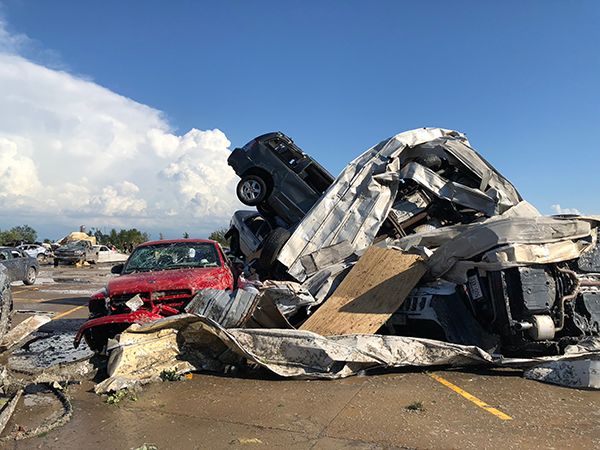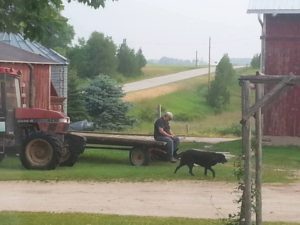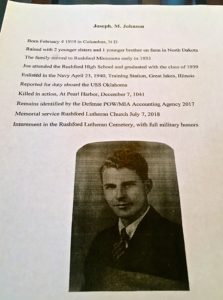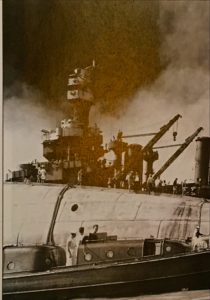Employees and management at Vermeer Manufacturing in Pella, Iowa, will always remember July 19, 2018. An EF3 tornado tore through the campus, causing significant damage and a number of non-life-threatening injuries. To add insult to injury, the tornado hit as the company was celebrating its 70th anniversary.

In the immediate aftermath of the storm, Vermeer CEO Jason Andringa said, “We’ve dealt with several challenges during our 70 years of doing business and we’ve survived them thus far. We plan on doing it again.” That recovery is well underway.
“I was there that day, taking part at an anniversary event at which we had brought in more than 400 customers and dealers,” said Mark Core, Executive Vice President and Chief Marketing Officer for Vermeer. “We had an unbelievably good day. I’d just left to go to another meeting at the corporate building, so I was as far away as I could get from the tornado and still be on the campus.

“The people that were closer than I was described a lot of flying debris,” said Core. “A lot of people in our tornado shelters didn’t necessarily hear anything but they did feel their ears pop. They knew something was close. But, for most people, they really didn’t have any idea how big the tornado was until they walked outside.”
Awe and bewilderment are terms Core used to describe the reactions in the aftermath. Several plants sustained heavy damage and the wastewater treatment facility was a total loss. As the recovery process continues, Core said they will have to demolish two of their manufacturing facilities on the Vermeer campus.
“That means about 30 percent of our manufacturing space will be demolished,” Core said. “It should take two or three years to rebuild, including the time it takes to decide exactly how we want it rebuilt.
“Our CEO (Andringa), the grandson of our founder, set two immediate goals the next day,” Core recalled. “The first goal was getting everyone back to work within 45 days, so they could get back to their normal livelihood. The second was he wanted us to build ourselves back stronger than ever by 2020.
“We got everybody back to work in 31 days,” he recalled. “The second goal is what we’re in the middle of right now. Some things force a company to reinvent itself. Vermeer has never had a financial crisis because of how the owners manage the company. We’ve never been part of a purchase or acquisition. But, we did have a tornado. That gives us the opportunity of a clean slate to improve how we do things.”
In his words, Core said they are “shockingly” back up to pre-storm production levels. They had to shift some of their divisions into rented buildings in order to reclaim some space. He said the workers are more crowded in than they were before. They did have to outsource a few things temporarily as well. He said, “it might look too good to the naked eye,” but they’re still producing at a high level.
“I think a big key to the rebuilding is the passion of Midwest workers who believe in the family and the company,” Core added. “The only way to get everybody back to work in 45 days was to figure out how to get the production lines back in place in 30 days. It hasn’t been easy and there’s still a lot to learn over the next two-or-three months about our temporary world here, but so far, it’s been really pretty amazing.”
The company had a small spike in back orders during the first few weeks after the tornado, but overall, Core said the disruption at the dealer level has been small. He said their dealers did a “phenomenal job” of working with each other to help take care of customers.
“It’s been so much fun to watch the people on our staff rise and shine as they continue to help the company move in the right direction,” Core said with a smile visible even during a phone conversation. “They’ve been able to make quick and smart decisions on things like production, environmental health and safety, facilities, and senior leadership.
“We’ve also had a lot of support from our community,” Core added. “We’ve even had a lot of help from companies that you’d consider our competitors. It’s humbling when you hear from a major competitor that night who told us their people want to head our way and see if they could help us. I think we had a total of eight competitors contact us within the first 24 hours.
Core said it says a lot about people in the business of agriculture, who are always willing to lend a hand in the worst of situations.
“I think we’re getting through this,” Core said.
Here’s a first-hand, birds-eye view of the damage at the Vermeer plant taken by a drone on the same day.











